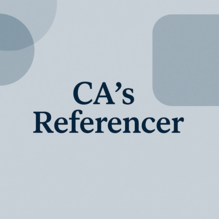Reimagining GST registration through Agentic AI framework
By Prabhat Kumar and Manudev Jain, ET CONTRIBUTORS
Oct 16, 2025
Synopsis
India’s GST registration process is both tedious and costly. The multi-agent systems (MAS) architecture, which leverages AI, has the potential to offer an effective solution.
Every day, two narratives emerge on India’s GST (goods and services tax) registration portal. The first belongs to Rajesh, a small manufacturer in Pune, who spends three days downloading a utility bill copy from online portals, locating, and scanning his rent agreement, compiling identification documents, and finally uploading them on the GST registration portal. The second narrative belongs to Priya, a GST officer in Mumbai, who spends her mornings cross-referencing documents across multiple websites, manually verifying uploaded details, and scrutinising documents to determine their authenticity. Both narratives reveal a system that, while functional, demands too much from everyone involved.
The numbers tell a sobering tale. In FY 2024-25 alone, authorities detected 25,009 fake firms generating fraudulent claims for input tax credits worth Rs 61,545 crore. These figures aren’t merely statistics; they represent sophisticated criminal networks exploiting gaps in our verification processes through non-verifiable phone numbers, fabricated utility bills, forged property documents, and stolen identity documentation. When fraud operates at this scale, it suggests our current approach, though well-intentioned, may not be entirely adequate for the onslaught of fraud it now faces. A quiet technological shift could make all the difference.
Consider what automation theorists call the “5D framework”, identifying workflows that are Dull, Demeaning, Dear, Dangerous, or Dirty. The GST registration verification process meets at least two squarely. It’s undeniably dull work that requires officers to perform repetitive cross-checks across multiple websites, and it’s dear in the truest sense. A single oversight can cost the exchequer crores in fraudulent claims.
The answer, or at least the most promising one, lies in something known as the multi-agent systems (MAS) architecture, which leverages artificial intelligence (AI). Rather than replacing human judgement, this AI-based solution (MAS) transforms the verification landscape by employing specialised AI agents to handle the tedious groundwork that currently consumes officers’ time.
The technical architecture employs multiple specialised AI agents: one manages database connections to external sources, another extracts fields from uploaded documents, a third performs cross-matching, while others detect document forgery and verify signature consistency. These agents communicate through a standardised model context protocol, sharing information to build comprehensive applicant profiles that would take human officers hours to cross-check manually.
Imagine Rajesh’s experience transformed: instead of hunting down physical utility bills, he simply enters his consumer account number. The MAS instantly verifies this against NPCI’s Bharat Bill Payment System. Property documents get cross-checked against state registries in real time. Phone numbers validate against telecom KYC databases. What once took days now happens in minutes, and importantly, the verification reaches authoritative sources rather than relying on documents that can be sophisticated forgeries.
For officer Priya, the transformation proves equally dramatic. Instead of manually searching across multiple websites, she sees a unified dashboard displaying comprehensive risk assessments. The system has already cross-referenced application details against the database of the Indian Cybercrime Coordination Centre, checked utility records, validated property registrations, and even analysed document authenticity and signature consistency using computer vision algorithms. What emerges is a colour-coded risk score with detailed explanations for each flagged parameter.
More importantly, MAS does not automate the judgement. It preserves what is called “human-in-the-loop” decision-making, where officers retain final authority over registration approvals. It only automates the drudgery.
MAS is not a moonshot. It doesn’t rely on experimental AI or futuristic tech. It uses existing government datasets, standard APIs, and explainable AI system pipelines. Such automated verification systems offer a path toward both efficiency and enhanced security, ensuring that people like Rajesh face simpler processes while officers like Priya can focus on what they do best: making informed decisions about complex edge cases.
In the end, MAS works on the elegantly simple principle of automation: Let machines verify. Let humans decide.
The writers Prabhat Kumar is Pr. Commissioner, IRS, and Manudev Jain is Joint Commissioner, IRS. Views are personal.
[The Economic Times]


